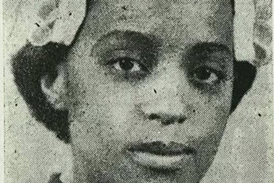The magic circle’s commitment to diversity will again be called into question after the proportion of women making partner in 2013 fell below 20%.
The quintet of UK-based firms appointed just 13 women worldwide out of a total of 73. In last year’s round, 24 of the 95 new partners were women.
Allen & Overy and Clifford Chance promoted four women between them from a total of 39, with three from Freshfields and five from Linklaters. One of the two new partners at Slaughter and May is female.
Research published last month by campaign group the 30% Club shows men are 10 times more likely than women to progress from trainee level to partner at major law firms.
The McKinsey poll of 10 of the UK’s biggest firms found 15% female representation at equity partner level, compared with 39% with associate partner status.
David Childs, managing partner at Clifford Chance, conceded that the proportion of women promoted this year was ‘disappointing’, despite the firm making headway in improving gender balance.
‘We remain fully committed to our ambition that our partnership is made up of at least 30% women,’ he said.
A spokesman for Allen & Overy said the firm had a much higher proportion of women in last year’s intake, and with 60% of trainees coming into the business being female, ‘it is only a matter of time’ before numbers even out.
Gay Collins, a spokeswoman for the 30% Club, which brings together leaders of firms to promote diversity, said many of the obstacles relate to broader culture and established practices. ‘This issue is vital for law firms – think of how much better they would be if they didn’t lose talent they’ve invested in for the last 10 years.’
The McKinsey research found 55% of new hires in 2012 were women.
If law firms are to reach the target of 30% female representation at partner level by 2020, six in every 10 new partner-elects will need to be women until then.
Tony Williams, principal at consultancy Jomati and former managing partner at Clifford Chance, pointed out that many of the promotions are in overseas jurisdictions at different stages of diversity development.
He added: ‘There is also the problem that partnership is coming much later due to firms’ economic pressures, which means that some women may have by that stage decided to have a family, and the relative rigidity of many firms’ partnership structure therefore puts them at a disadvantage.’



























No comments yet